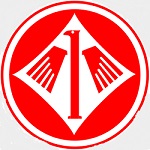Oxford AC051 German Messerschmitt Bf 110G Fighter - Jagdgeschwader 1 "Wespen," Western Front, 1943 (1:72 Scale)
"Guns before butter. Guns will make us powerful; butter will only make us fat."
- Reichsmarschall Hermann Goering, Head of the German Luftwaffe
 The Messerschmitt Bf 110 was an aircraft of very mixed fortunes. It has often been criticized for its failure during the Battle of Britain, while its successes in other fields have been largely ignored. Despite not living up to the Luftwaffe's expectations it did manage to serve Germany throughout the Second World War in the long-range escort fighter, fighter-bomber, reconnaissance, ground attack and night fighter roles.
The Messerschmitt Bf 110 was an aircraft of very mixed fortunes. It has often been criticized for its failure during the Battle of Britain, while its successes in other fields have been largely ignored. Despite not living up to the Luftwaffe's expectations it did manage to serve Germany throughout the Second World War in the long-range escort fighter, fighter-bomber, reconnaissance, ground attack and night fighter roles.
The long-range multi-seat escort fighter is possibly the most difficult of combat aircraft to design. Certainly no entirely successful machine in this category emerged from the Second World War, and when Professor Willy Messerschmitt began design studies for such a warplane towards the end of 1934 at the Bayerische Flugzeugwerke at Augsburg his problems would have seemed insurmountable had he possessed a full knowledge of interceptor fighter development trends abroad. Such a machine as was required by Marshal Goering to equip the elite "zerstorer" formations that he envisaged had to be capable of penetrating deep into enemy territory, possessing sufficient range to accompany bomber formations. The fuel tankage necessary presented a serious weight penalty and called for the use of two engines if the "zerstorer" was to achieve a performance approaching that of the lighter interceptor fighter by which it would be opposed. Yet it had to be manaoeuvrable if it was to successfully fend off the enemy's single-seaters.
The Bf 110Es were capable of carrying a respectable bomb load of 4,410 lb (2,000 kg) as fighter-bombers, while straight fighter and reconnaissance versions were also built. These, and later versions, were operated with a fair degree of success in many war zones. The Bf 110F was basically similar to the E, but two new variants were produced - the 110F-2 carrying rocket projectiles and the F-4 with two 30 mm cannon and an extra crew member for night fighting. The last version, the Bf 110G, was intended for use originally as a fighter-bomber but, in view of the success of the F-4 and the increasingly heavy attacks on Germany by Allied bombers, was employed mostly as a night fighter.
Pictured here is a 1:72 scale replica of a German Messerschmitt Bf 110G fighter that was attached to Jagdgeschwader 1 "Wespen," during 1943.
Sold Out!
Dimensions:
Wingspan: 10-inches
Length: 8-inches
Release Date: April 2015
 Historical Account: "Wespen" - Jagdgeschwader 1 (JG 1) was a German World War II fighter unit or "wing" which used the Messerschmitt Bf 109 and Focke-Wulf Fw 190 aircraft, between 1940-1944. The name of the unit derives from Jagd, meaning "hunt" and Geschwader, meaning "wing". First formed in May 1939 in eastern Prussia, I./JG 1 was one of the original groups created by the Luftwaffe as part of its expansion plans.
Historical Account: "Wespen" - Jagdgeschwader 1 (JG 1) was a German World War II fighter unit or "wing" which used the Messerschmitt Bf 109 and Focke-Wulf Fw 190 aircraft, between 1940-1944. The name of the unit derives from Jagd, meaning "hunt" and Geschwader, meaning "wing". First formed in May 1939 in eastern Prussia, I./JG 1 was one of the original groups created by the Luftwaffe as part of its expansion plans.
Between 1940 and 1942, JG 1 operated primarily over the Western Front and northern occupied Europe. During the initial days of the war, JG 1 faced little resistance, apart from occasional Royal Air Force (RAF) excursions. The unit was rarely engaged in large-scale confrontations during this time. From late 1942 onwards, it was tasked with the defense of the Reich. After D-Day, elements of JG 1 were moved to France and were tasked with air support to the Wehrmacht Heer, along with their air defense role. Operation Bodenplatte severely reduced the strength of JG 1.
Towards the end of the war, the unit was disbanded and its remaining pilots and aircraft were re-organized. What remained of these groups surrendered to Allied forces at the end of the war.
JG 1 was the first unit to attempt 'aerial bombing' techniques against the United States Army Air Forces (USAAF) heavy bomber formations. It was the only unit to be equipped with the Heinkel He 162 jet fighter.
In 1944, the "Oesau" suffix was added to the unit's title, after its late Geschwaderkommodore Oberst Walter Oesau (127 kills), who was killed in action.
Some 700 enemy aircraft were claimed shot down during the war by the unit.


